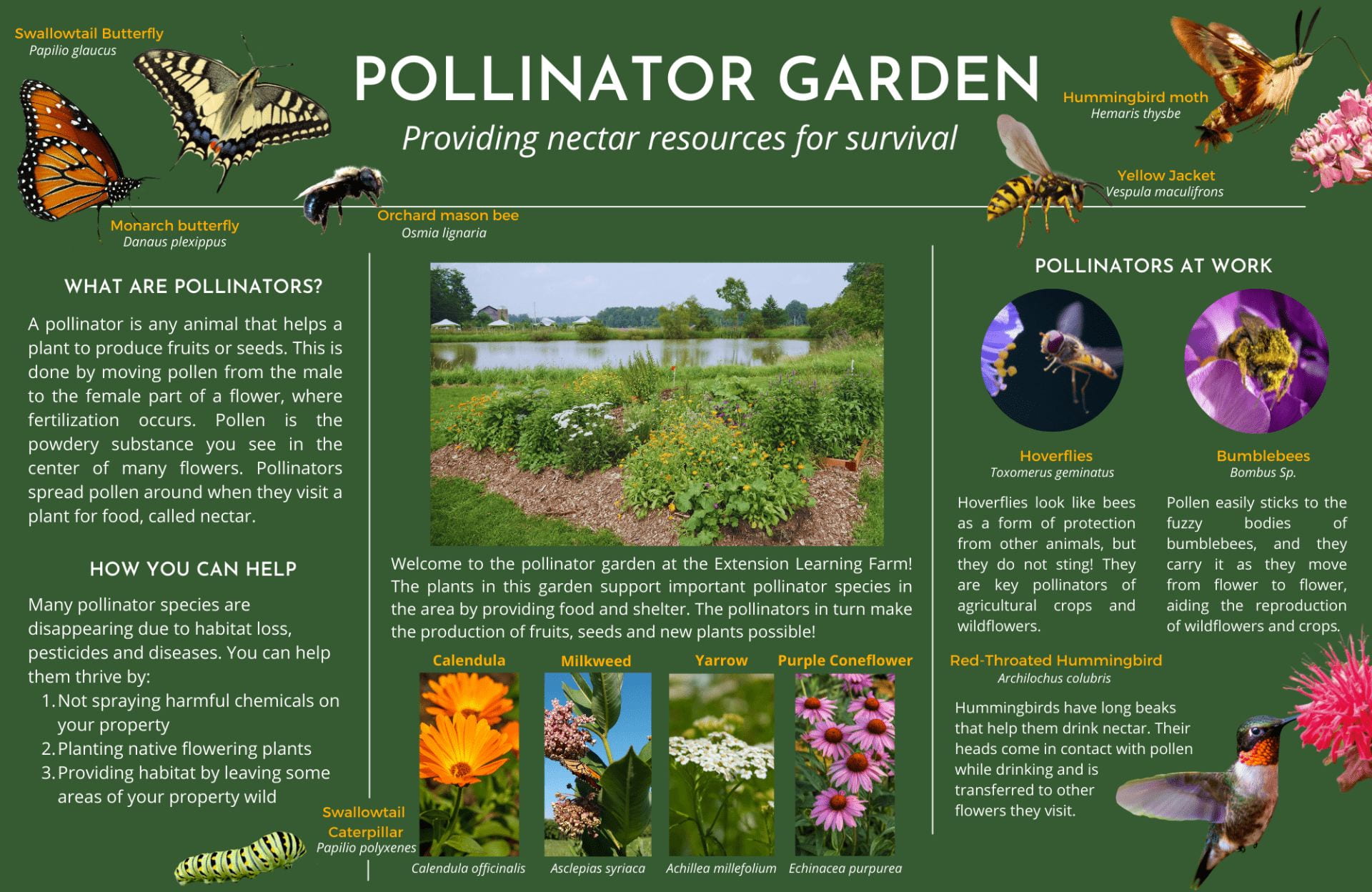This past summer I was a Garden to Table intern at Cornell Cooperative Extension of St. Lawrence County. I am a student at St. Lawrence University and the internship was through the Public Interest Corps on campus, which pairs students with non-profits in the North Country. I carried out multiple projects while there, including designing content for a pollinator garden sign, editing videos about food producers, contributing to a collection of local, seasonal recipes, and assisting with cooking classes for youth attending Farm Day Camp. These projects, in addition to the everyday tasks like watering and harvesting in the high tunnel, helped to forward the mission of Extension.
One of my favorite assignments was designing the pollinator garden signage. I started by researching models used in gardens around the world and reading about native plants and pollinators of the North Country, using resources such as the New York State Conservationist magazine. I used a design software called Canva which I had experience with before this internship but got to explore further in this assignment. With feedback from my supervisor, Erica, we arrived at a final version. It is rewarding to know that something I helped envision will be placed permanently at the Learning Farm for visitors to enjoy.

Apart from gaining a new skill set, I have grown more knowledgeable about the North Country after this internship, as well as more passionate about the activities and organizations that exist here. I understood that nonprofits have a big role to play in rural New York, and Cornell Cooperative Extension in particular has a role in supporting local farmers and businesses, as well as providing stimulating activities for youth.

I am beyond grateful for the people that welcomed me at Extension, and interning here opened my eyes to the community of northern New York. My experience was enriching professionally but also made my summer a more enjoyable experience: I tasted blueberries for the first time, harvested my first tomatoes, connected with kids through food, and met incredible people. I hope to implement what I learned into my academic studies but also in my daily life, bringing to SLU everything I learned about the local culture and environment.


